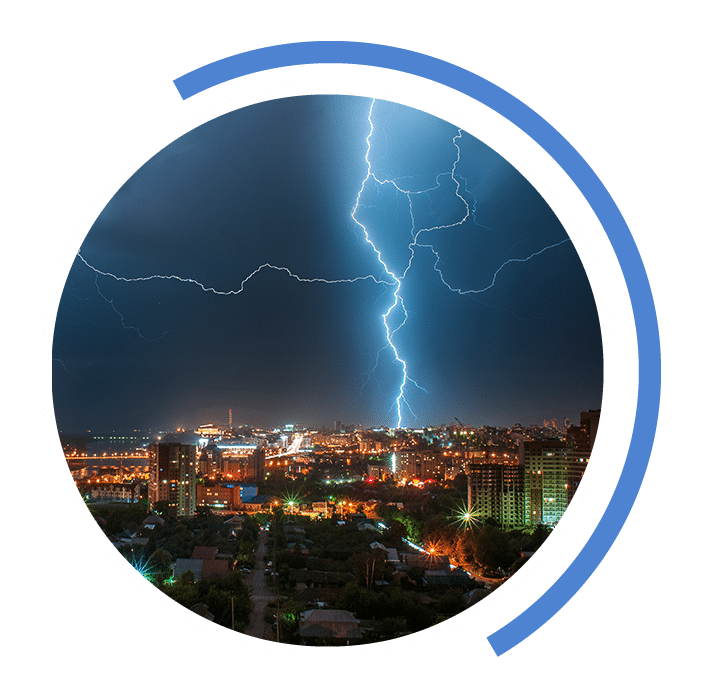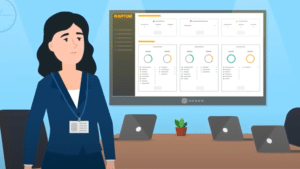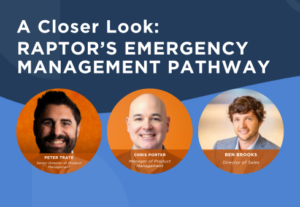Listen to this blog
6 minutes
Applying lessons learned to help guide schools in emergency management planning
By Drew Smith. Account Executive at Raptor
Like most idealistic college graduates- I wanted to change the world. In 2012, my wife and I embarked on an adventure to help develop community development and disaster relief projects in Southwestern Madagascar. We learned the tribal languages, camped 3 weeks a month in the bush (rural farmland isolated from modern amenities) doing detailed research. During that time, I was also getting my master’s degree specializing in Disaster Relief and Emergency Management. In the 5 years that I have worked with K-12 schools, I have been amazed at how much I rely on my overseas experiences to help guide schools in their emergency planning. In 2013, Madagascar was hit with a cyclone on its West Coast, and I was in the center of the Disaster response. My wife and I were conducting research in a remote part of the country where paved roads do not exist. We received notice about the cyclone while we were interviewing people from a hunter-gatherer tribe, and we needed to get back ASAP. Although this was a scary predicament, I was excited to test what I learned from my master’s degree in Disaster Relief and Emergency Management.
According to one report, Tropical Cyclone Haruna made landfall over the south-west coast of Madagascar on 22 Feb 2013 as a powerful category 2 cyclone. As of 7 Mar, the cyclone had caused 26 deaths and affected over 40,000 people; around 2,000 people were still displaced.
Preparing for the Worst
Racing towards camp on flooded mud-filled roads, we had a few days to prepare before the heart of the cyclone made landfall. The team’s priority was to establish communication channels. I worked with our team to ensure we had either radios or satellite phones to keep lines of communication up and running since we were bound to lose power. I also made sure we had ways to communicate with first responders as well as our community partners. In any emergency, especially a natural disaster in extremely remote areas where traditional communication resources may be scarce, it’s important to establish secure and reliable means of communication within your team and externally with partners and local authorities. Why does that matter? You cannot be everywhere at once. Resources are limited and should be distributed for the most effective response.
Once the cyclone made landfall, our job was to stay out of the way and let the first responders take over. First responders (not that Madagascar had many) were better equipped to handle the immediate needs of affected residents. In our town, a dam broke, and the fire department had to rescue older people who could not get out of the flood waters on their own. By establishing clear lines of communication within our team and externally, we could make sure the first responders were aware of the residents who needed the most urgent help; and could thereby aid and save lives.
The Process for Recovery
After the cyclone blew past, the recovery efforts had to begin immediately. What did that look like in rural Madagascar? Recovery was done in phases. Immediately after the storm, we distributed survival buckets to families in need—a week’s worth of food, batteries, toiletries in a useful clean bucket. We had a warehouse filled with all the supplies needed for a project like that so that there was no time wasted helping people recover. From there, recovery looked different depending on the crisis. During the locust plague for example, recovery looked like a partnership with the World bank for pesticide. For Cyclone relief, it was helping clean up areas of town, and providing seeds for rural villages to replant their fields. These recovery efforts would not have been possible if we had not planned for them, and physically prepared for them. Planning for recovery from a disaster meant that we were able to help when it was so desperately needed.
Applying Lessons Learned to Help Schools Prepare for Emergencies
While the mechanisms and outputs may look different for schools versus a team in rural Madagascar, the guiding principles to emergency management are the same. If you want to help your schools prepare for the worst, ask yourself these questions:
- Does your school have a way to communicate with staff, police, EMT, fire in the event of an emergency?
- Is your communication solution reliable and easy to use and access?
- Does your district have a way to coordinate with first responders so that they can do their job more effectively?
- Is your school prepared for a short- and long-term recovery?
- Are your plans and documents backed up with the right tools and procedures?
You may not need a warehouse filled with rice, beans, and cassava, but a solid Emergency Operations Plan (EOP) and the right emergency management software can help ensure the safety of every student and staff member. If you would like to learn more best practices for emergency preparation, response, and recovery, please email me ([email protected]) or request a demo.
Related Resources
Strategies for Effective K-12 Disaster Preparedness, Response, and Recovery
Responding and recovering from a severe weather event starts with creating a plan to keep everyone safe.
Listen to this blog
6 minutes







